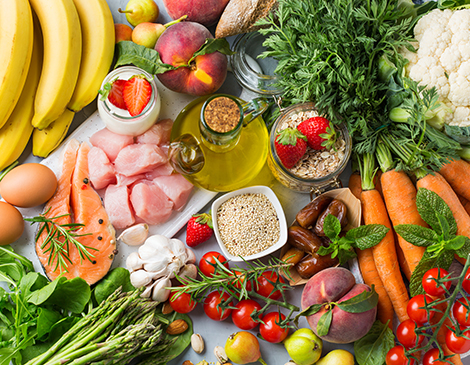From cleanses to juicing, low-carb to low-sugar, and high-fat to fat-free, dozens of diets have had their time in the sun throughout the years. And though individual diets may come and go, one thing is for certain: There’s never any shortage of trendy types to try. We asked Gretchen Spetz, the licensed and registered dietitian behind the Functional Kitchen, to walk us through a few of today’s most popular eating trends: what they are, why they might be right for you, and, perhaps most importantly, whether they work. “Diets should be very individualized,” Spetz says. “We’re all different, and our diets should be different to fit our needs.”
Intermittent Fasting
Spetz calls intermittent fasting “less of a diet and more of a lifestyle change.” You’ll set your own specific timeframe for eating, followed by an overnight fast that lasts typically 12, 14 or 16 hours.
Pros: It eliminates late-night snacking and allows your body time to rest and digest, which can help optimize blood sugar control.
Cons: “It can easily morph into an eating disorder — a situation where you don’t eat when you’re fasting, and then suddenly you’re not eating all day,” Spetz says.
Ketogenic Diet
By lowering carb intake, the ketogenic diet deprives your body of the sugar it typically turns into energy, forcing it to burn fat instead.
Pros: Keto is considered an effective therapeutic diet for epileptic individuals, as well as those with Alzheimer’s and dementia. It’s also one of the fastest ways to lose weight.
Cons: Spetz warns that keto-induced weight loss is typically unsustainable given the diet’s many restrictions, and it can mess with hormone production, digestion and more. “For most people, keto is best done as a short-term therapeutic diet.”
Mediterranean Diet
This eating style focuses on whole and minimally processed foods, with an emphasis on plant-based foods and lean protein like poultry, fish and eggs.
Pros: “There’s extensive research on its benefits around heart health, blood pressure control, cancer prevention, brain health and weight loss.” she says.
Cons: Because this diet still allows for whole grains, it’s easy to accidentally overdo it on whole wheat pasta and wild rice.
Raw Foods Diet
You’ll eat nothing but raw, uncooked foods in their purest form.
Pros: Cooking food breaks down the fiber within them. Raw foods remain fiber-filled and can fill you up faster, ultimately leading to weight loss.
Cons: Without much fat in their diets, dieters are at risk of vitamin A and E deficiencies, and it can be tough to consume enough protein. “If you’re not getting enough calories from protein, you’ll lose muscle mass,” she says.
Volumetric Diet
This diet focuses on quantity, emphasizing the consumption of low-calorie, nutrient-dense foods like fruits, vegetables, whole grains and low-fat dairy products. “There’s a continuum,” Spetz says. “You can eat more vegetables than you can rice, than you can chicken, than you can something sugary.”
Pros: If done right, you should feel satisfied and full while still losing weight.
Cons: Keep an eye on portion sizes to be sure you don’t go overboard.
Whole30
This monthlong diet eliminates processed foods and potentially inflammatory ingredients including dairy, gluten, sugar and alcohol, as well as all grains, beans and legumes.
Pros: “This is such a January-type diet for people who are coming off the holidays, when they had more sugar and alcohol than usual,” Spetz says.
Cons: Say goodbye to the convenience of ordering takeout or microwaving a frozen meal and plan to spend a lot more time planning and preparing meals yourself.

Get Fit: Determine Which Diet Works Best For You
Gretchen Spetz, licensed and registered dietitian behind the Functional Kitchen, doles out pros and cons of the most popular diets.
health
7:00 AM EST
January 27, 2021



